NIL
College football needs Mike Leach plan in NIL era of change
JD Vance fumbles Ohio State title trophy at White House event Ryan Day and the Ohio State Buckeye’s football team were honored at the White House for their 2024 national championship victory. These problems aren’t unique, everyone. They’re just constantly viewed at surface level. The latest rage is this: the NFL Draft needs an opt […]
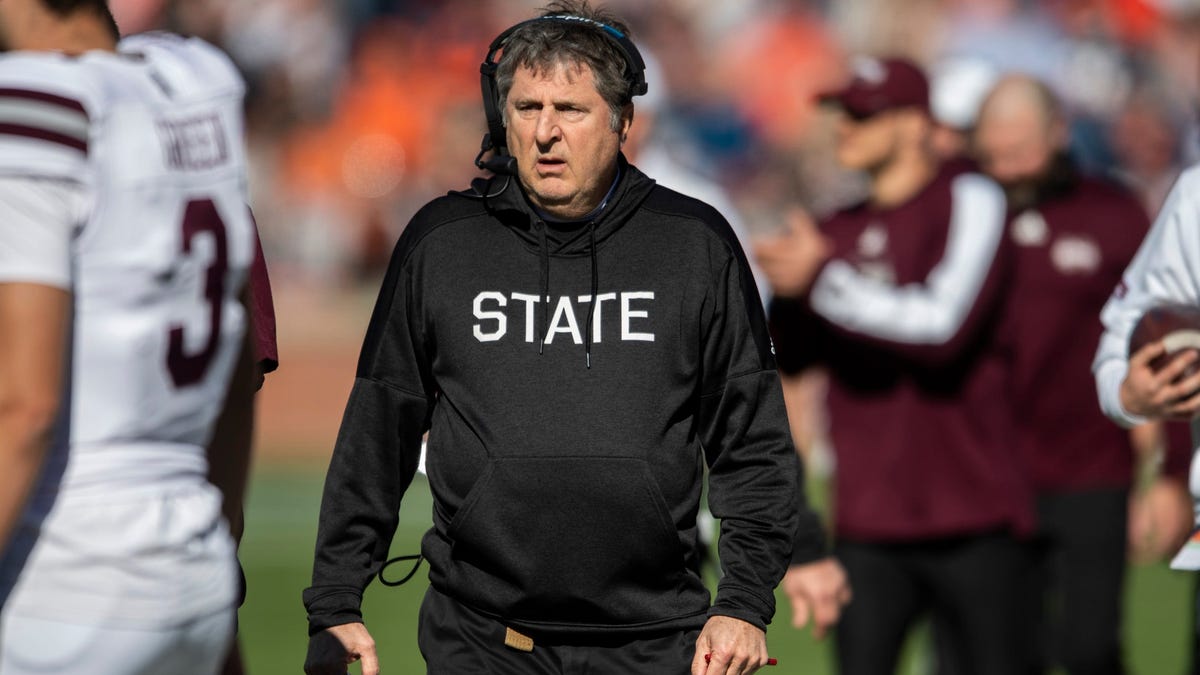
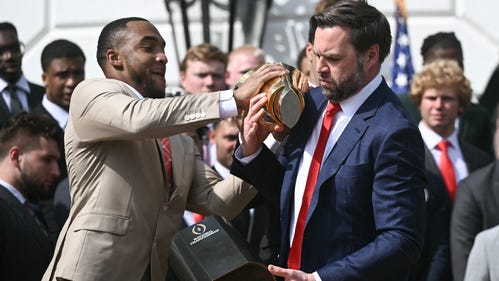
JD Vance fumbles Ohio State title trophy at White House event
Ryan Day and the Ohio State Buckeye’s football team were honored at the White House for their 2024 national championship victory.
These problems aren’t unique, everyone. They’re just constantly viewed at surface level.
The latest rage is this: the NFL Draft needs an opt out clause. If you don’t like where you’re drafted, you can go back to college football.
This, of course, is ludicrous.
But when Texas quarterback Quinn Ewers is selected in the seventh round, or Alabama quarterback Jalen Milroe – invited to the draft by the league – had to wait until the third round to be selected, maybe someone, somewhere is giving players bad information.
Or maybe they just wanted out of college football.
Years ago, I had a long conversation with then-UCLA quarterback Josh Rosen. Say what you want about his NFL flop, he was one of the rare, elite college players who saw beyond the surface — and wasn’t afraid to speak his mind.
Long before player empowerment was a thing, long before the NCAA caved in 2021 on NIL and free player movement to avoid losing the billions it eventually will under the House case and ensuing revenue sharing, Rosen was talking about finding a compromise.
One of his key points: many players leave after their junior seasons – no matter their grade from the NFL Draft advisory board – because school is simply not for them.
It doesn’t mean they can’t handle the academic workload or a suddenly unique public life, it just means they’re more comfortable in a professional environment where their entire focus is football.
It is here where we introduce the late, great Mike Leach, who had a whopper of plan a couple of years ago that was scoffed and laughed at — and now, in these ever-changing days of the sport, looks incredibly insightful.
A year after the NCAA threw open the barn doors on NIL and free player movement, Leach explained to me an idea he had for optional learning tracks for football players at major universities.
“We can ignore the reality of the situation, or we can face it and do something about it,” Leach said.
This from the guy who had a plaque in his office – at Texas Tech, Washington State and Mississippi State – that read, “You’re either coaching it, or allowing it.”
For far too long, the NCAA has been allowing it.
Leach’s plan is simple: there are two academic tracks for football players at major universities. When a high school recruit signs a letter of intent, he chooses the specific academic track — student athlete, or learning professional.
Leach estimated then that the student athlete track (the current academic model) is for about about 90 percent of players. That was before the explosion of NIL and projected revenue sharing.
The student athlete number may have drastically decreased since.
The student athlete track consists of the current benefits and a stipend, which would now be revenue share. Players can’t be cut for playing ability, but can be cut for breaking rules. No trades, no draft.
But there’s a sweet, sweet carrot dangling out there: if players graduate in four years, and play all four seasons of eligibility at the same school, they receive a significant retention bonus.
If players transfer at any time, or don’t graduate, they’re ineligible for the retention bonus.
“I don’t like taking the degree out of the equation,” Leach said. “Degrees help lives, help families, help generations.”
Then there’s the learning professional track, the group of players Leach said more closely align with the current explosion of NIL and player movement.
It begins with a deadline for high school players to declare the learning professional track, and once it passes, there will be a draft. That’s right, a draft.
“Every other league does it,” Leach said. “The crummiest sports league or the best, they draft. Little league has a draft.”
And that’s part of the gamble for young players. If you enter the learning professional track, you can be drafted by any school.
You aren’t choosing your school, they’re choosing you. This brilliant move also brings parity into the equation.
Another unintended, yet wildly positive, consequence of Leach’s plan.
“There’s no bargaining and extorting (NIL) money from schools, playing one against the other,” Leach said. “Like hell, you will. Not here. We’ll call you when you’re drafted, and you’ll know what team you’re playing for.”
There’s no cap on NIL money, and a player can make whatever the market will bear. Players can be cut at any time for any reason, just like the NFL. Players can be traded.
Players can move freely between schools annually, but within a one-week window after the season.
The learning professional track will include academic courses that directly affect individual growth. Finance and investing, kinesiology, psychology, and the like.
“Everyone wants guardrails to this deal,” Leach said. “Well, here they are.”
For decade upon decade, the NCAA has been a reactionary body. Never leading, always reacting to the latest lawsuit ― and losing nearly every single time in every single major lawsuit involving player vs. university.
The NCAA isn’t coaching it, it’s allowing all of this unraveling of the sport to go unchecked.
Maybe it’s time to change course.
Matt Hayes is the senior national college football writer for USA TODAY Sports Network. Follow him on X at @MattHayesCFB.
NIL
Will Michigan’s Yaxel Lendeborg stay or go pro after combine?
Michigan basketball got a commitment on Friday, and while there’s no offense to the new addition to the 2025 class, Wolverines fans are more concerned at the moment with one name and one name only: Yaxel Lendeborg. The forward who starred at UAB before making a transfer commitment to the maize and blue this offseason […]

Michigan basketball got a commitment on Friday, and while there’s no offense to the new addition to the 2025 class, Wolverines fans are more concerned at the moment with one name and one name only: Yaxel Lendeborg.
The forward who starred at UAB before making a transfer commitment to the maize and blue this offseason is still testing the NBA draft waters. Lendeborg participated in the NBA combine this week, which should give him some clarity as to whether he should stay in college or go off to the professional ranks. He was torn, but leaning toward Michigan early in the week, but is supposedly getting more torn as time goes by.
Now that his turn in Chicago has passed, multiple outlets across the college basketball landscape have weighed in with varying degrees of certainty as to what they believe Lendeborg’s decision should be. Here are some of the choice reactions to his NBA combine results, and if they believe he will end up in Ann Arbor or in the pros.
ESPN
The ‘worldwide leader’ didn’t give a full update as to whether Lendeborg is an obvious choice to stay in the draft or enroll in Ann Arbor, but did make it clear that he will be a first-round pick should he remain in. Still, is it enough for Lendeborg to want to stick it out in the NBA draft?
Yaxel Lendeborg, PF, UAB/Michigan: Lendeborg is the biggest name to monitor over the next two weeks. He transferred from UAB after a second straight productive campaign, committing to Michigan during Final Four weekend. Should he end up in Ann Arbor, coach Dusty May’s team could be in the preseason top-five. But Lendeborg is a projected first-round pick in ESPN’s most recent mock draft and proved that while in Chicago. He measured at 6-10 in shoes with a 7-4 wingspan and then performed well in the scrimmages.
Lendeborg said Wednesday he wants to be drafted in the top-20, so it will be interesting to see whether he gets a guarantee before the withdrawal deadline.
Hoops Hype
Part of the USA TODAY Sports network, Hoops Hype didn’t have Lendeborg as a clear winner or loser (though it did include both of Michigan’s combine entrants — Danny Wolf and Vlad Goldin — as losers) but simply said he has a tough decision to make.
Yaxel Lendeborg (Michigan, Best Rank: 27 / Worst Rank: 28):TBD. Torn between school and NBA after a standout combine, has a $2.3m NIL deal with Michigan.
For the Win
Another sister site with USA TODAY Sports, For the Win does have Lendeborg as one of the combine winners, sitting at No. 4 in its list of five. But isn’t sure that it’s enough to keep him away from Ann Arbor.
No one has a tougher decision to make than Yaxel Lendeborg, who was a UAB standout before using the transfer portal to commit to Michigan.
While he stands to potentially make a ton of money NIL in the NCAA after a particularly dominant collegiate season last year, Lendeborg had an undeniably intriguing showing in Chicago. He measured 6’8 ½” without shoes at 234.6 lbs with a 7’4″ wingspan and 9’0 ½” standing reach.
His first scrimmage was very good, recording 13 points (6-of-11 FG) with nine rebounds, two assists, one steal, and one block.
The second was not as great with just 4 points, but even then, he was at least slightly productive in other ways. Lendeborg added three rebounds and two steals.
It seems like Lendeborg might want assurance he is a top-20 pick to stay in this class. We have him projected at No. 22 overall in our most recent mock draft, so it will come down to the wire for him.
CBS Sports
CBS Sports has multiple parts on Michigan basketball and Lendeborg, first noting that Lendeborg was good enough where Dusty May might be ‘scrambling’ to find a replacement.
Michigan is probably going to have to do the same after UAB star Yaxel Lendeborg also had a big week to catapult into the top-25 range of the first round (more on him in a bit).
The more on Lendeborg in a bit, bit:
Winner: Lendeborg rising up draft boards
Measuring 6-8.5 with a shocking 7-4 wingspan and 9-0.5 standing reach helped Lendeborg, the UAB star who is committed to transfer to Michigan, stretch his way into a range in the draft that may be too tough for him to pass on. He spoke at the combine this week and said he is legitimately torn on his decision to stay in the draft or go back to school and remains one of the biggest names with an unknown. The sentiment entering the week was that returning to school was all but a guarantee but now, Wolverines fans have to hold their breath and hope.
He did well for himself in addition to the measurements and looked the part of a first-rounder in scrimmages operating as a small-ball big. In Wednesday’s scrimmage he had 13 points, nine boards, two assists, one block and one steal, matching up nicely against the length of Team Lazare. He was quieter on Thursday with four points, three boards and two steals. Overall it was a big week for him — but was it big enough for him to fully commit to the draft?
USA TODAY Sports
The mothership doesn’t have a traditional winners and losers post on Lendeborg, but instead has a full profile on his decision. With NIL potentially helping Michigan basketball in this arena, the decision is essentially laid out — in Lendeborg’s words.
He doesn’t want to stay in school just because of the money. But he also doesn’t want to go to the NBA and not have a chance to be a rotation player quickly. He only needs one team to promise he will get one to stay in the draft. He just needs to know before May 28.
“If it doesn’t happen by then,” Lendeborg said, “then the decision is going to be really hard to make.”
Conclusion
It’s quite unclear if Lendeborg’s performance was good enough to warrant him staying in the draft or if it’s murky enough that he’ll stay in college. He wasn’t a clear enough winner where it made it obvious that he’ll get what he’s looking for — a guaranteed contract — but it was also clear that he was a winner this week.
We’ll know more in 12 days.
NIL
Tennessee Volunteers Consider New Sponsor off Value of NIL Payout Over Brand
At one point, college football and basketball players coveting Nike apparel drove decision-making, but the NIL landscape has changed priorities. Some head coaches are balking at the evolving environment, but the consensus remains that programs must adapt or fall behind. The Tennessee Volunteers are a prime example of the changing times as they explore their […]

At one point, college football and basketball players coveting Nike apparel drove decision-making, but the NIL landscape has changed priorities.
Some head coaches are balking at the evolving environment, but the consensus remains that programs must adapt or fall behind.
The Tennessee Volunteers are a prime example of the changing times as they explore their next apparel contract with new considerations.
While the University of Tennessee’s athletics contract with Nike expires in 2026, the athletic department has been evaluating a potential departure from their apparel provider since 2014.
As Adam Sparks of Knoxville News reports, Tennessee is free to explore their options after the exclusive negotiations window for an extension ended March 30.
Now, all of this could be leverage for driving up the price of a new deal with Nike. But it appears the considerations for what matters in a brand deal are evolving.
Sparks names Adidas and Under Armour as the top brands alongside Nike in college sports, and the Volunteers previously sported Adidas for 16 years.
Nike will likely get the first crack at remaining their apparel provider with a chance to match the highest offer, but the popularity of Tennessee could be capitalized on in an open market.
The Volunteers made the College Football Playoff last season and offer the massive exposure of their fanbase and the SEC.
That’s what Tennessee offers; what does a new brand offer?
Prior to name, image, and likeness dominating college sports, recruits prioritized things like apparel brands in choosing their destinations, and Nike offered that allure.
In the year 2025, one thing dominates decisions by recruits and transfer portal prospects; player pay.
Should Adidas offer a more lucrative payout for players, that could impact their roster and trajectory for success.
In this landscape, that’s a fair and, frankly, necessary consideration.
Moreover, corporate campaigns offer another revenue stream for college athletes, and that could drive the future of their next deal.
Importantly, Sparks reports that the Volunteers design their uniforms in-house, and that ensures that fans won’t be surprised with a new color scheme or design they’re unfamiliar with.
However, the logo donned on the apparel could very well be something other than the famous swoosh, as Tennessee looks for a unique competitive advantage in their future apparel sponsor.
NIL
Olympic gold medalist and University of Houston legend Carl Lewis pushes for overhaul of NCAA sports
HOUSTON, Texas (KTRK) — Nine-time Olympic gold medalist Carl Lewis is busy preparing his University of Houston track and field team for the biggest meets of the outdoor season. He’s also working to save the sport that turned him into an Olympic legend. “Olympic sports are going to have to be in one category. Let’s […]

HOUSTON, Texas (KTRK) — Nine-time Olympic gold medalist Carl Lewis is busy preparing his University of Houston track and field team for the biggest meets of the outdoor season. He’s also working to save the sport that turned him into an Olympic legend.
“Olympic sports are going to have to be in one category. Let’s figure out how we do that,” Lewis said. “Football and basketball are in another category. That’s where I think the future is, or there will be no Olympic sports.”
Lewis has emerged as a passionate advocate for the traditional model of NCAA sports that we’ve all known for generations, where college athletes are paid little or no money beyond the scholarship they use to earn a college degree.
The UH track and field coach believes the big money that has poured into college football and basketball through NIL threatens other sports like track and field, swimming and diving, and many more.
Lewis said the current system is “not sustainable.” He’s also adamant that he doesn’t blame anyone in football or basketball for taking money that is available.
“I’m all for it,” he said.
RELATED: ‘We’re all in’: UH ready to spend as judge decides the future of college sports
As a judge is expected to clear the way for schools to start directly paying players, the University of Houston says it’s ready to spend the maximum.
UH athletic director Eddie Nuñez recently reaffirmed that UH will join schools directly paying their athletes at the maximum total allowed by the NCAA, $20.5 million a year, starting on July 1.
At many schools, the majority of that money will be paid to football and basketball players, leaving other athletes out. Lewis believes that the system threatens the survival of sports like track and field.
“If anyone thinks it can continue to go this way, they’re fooling themselves,” he said.
Lewis is now promoting a split that would allow college football and basketball to have their own governing body. That would allow the rest of the sports to continue on their own.
“The number one objective of these college athletes is to get here to get a degree to get a job,” Lewis said.
Lewis points to his current roster on the UH track team as an example. He said that out of over 100 athletes on the UH team, three might be able to make a living as professionals in track.
The rest deserve the opportunity to compete in college so they can get a degree.
Lewis is convinced that the current system, that is still emerging under new rules, will leave schools around the country robbing “Peter to pay Paul and everyone’s gonna be broke.”
For more on this story, follow Greg Bailey on Facebook, X and Instagram.
Copyright © 2025 KTRK-TV. All Rights Reserved.
NIL
Report
Two days after questioning whether President Donald Trump‘s proposed commission on college sports was even necessary, Nick Saban has reportedly met with Texas Tech billionaire donor and fellow co-chair Cody Campbell, according to Yahoo! Sports’ Ross Dellenger. Saban, the legendary former Alabama head coach and ESPN College GameDay analyst, has been tabbed by Trump to […]
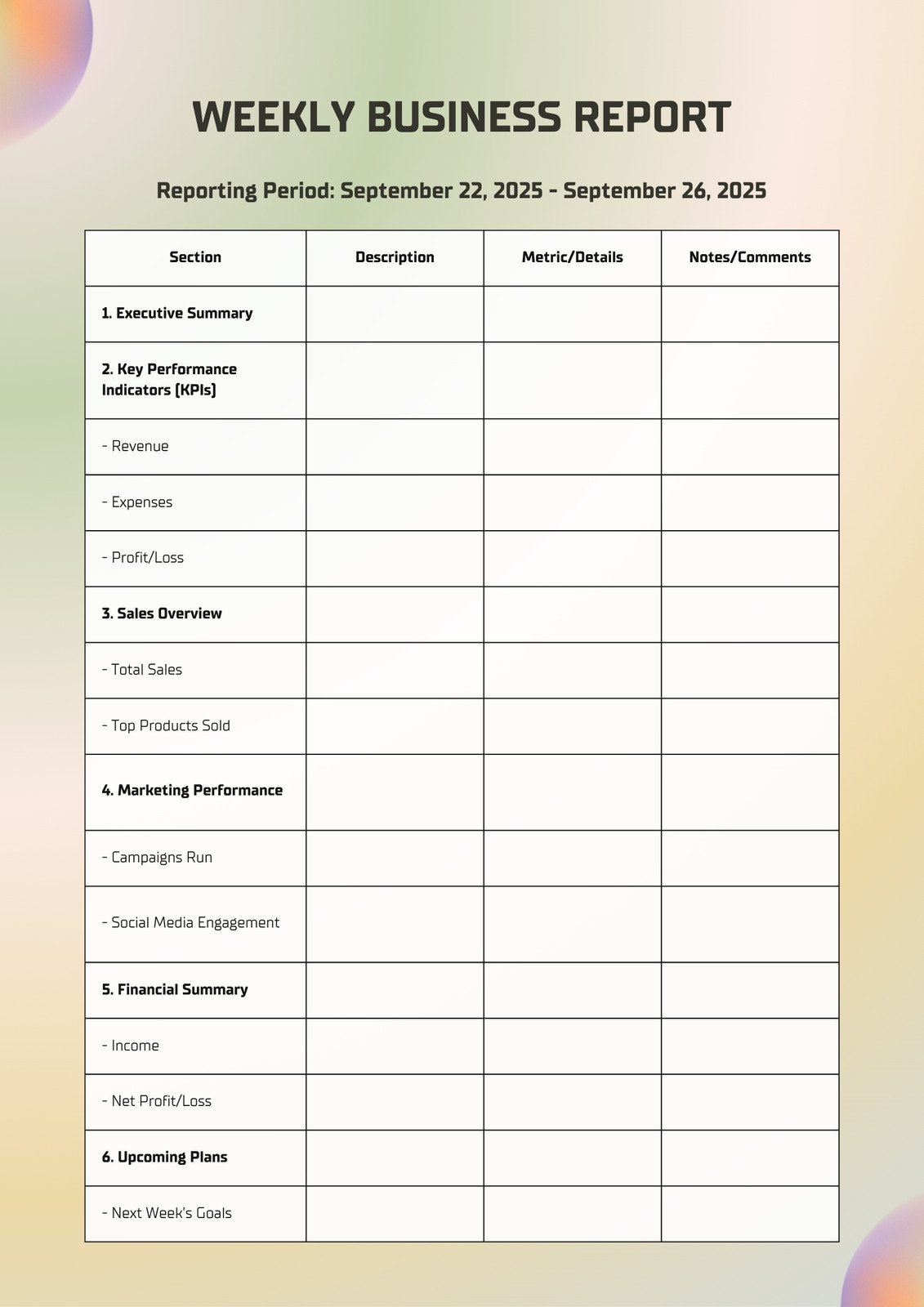

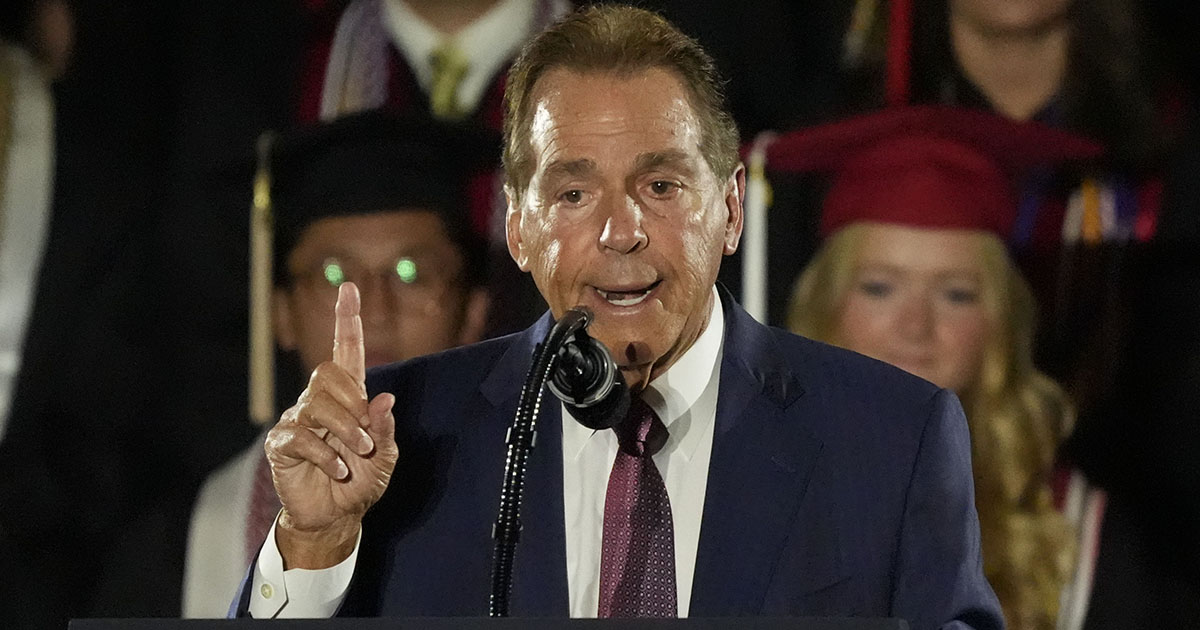
Two days after questioning whether President Donald Trump‘s proposed commission on college sports was even necessary, Nick Saban has reportedly met with Texas Tech billionaire donor and fellow co-chair Cody Campbell, according to Yahoo! Sports’ Ross Dellenger.
Saban, the legendary former Alabama head coach and ESPN College GameDay analyst, has been tabbed by Trump to headline his presidential commission that is expected to “deeply examine the unwieldy landscape of college sports, including the frequency of player movement in the transfer portal, the unregulated booster compensation paid to athletes, the debate of college athlete employment, the application of Title IX to school revenue-share payments and, even, conference membership makeup and conference television contracts,” according to Yahoo! Sports.
While the makeup of the commission is still developing, White House leaders have already begun “pooling recommendations” from those within the Power Four conferences, NCAA and athlete-focused groups for potential committee membership, according to Dellenger. The working group is expected to limited to 10 or fewer members, with “a goal of political and cultural diversity,” per Dellenger.
Nick Saban ‘not sure we really need’ President Donald Trump’s commission on college sports
Saban was formally tabbed to be help solve all that’s ailing college athletics in the day and age of NIL and the transfer portal as co-chair of President Trump‘s commission on college sports. But it appears the former Alabama coach isn’t exactly sold on need for the presidentially-mandated working group.
“First of all, I don’t know a lot about the commission. Secondly, I’m not sure we really need a commission,” Saban said Wednesday afternoon on The Paul Finebaum Show on SEC Network. “I think that a lot of people know exactly what the issues are in college football and exactly what we need to do to fix them. The key to the drill is getting people together so we can move it forward.
“I’m not opposed to players making money, I don’t want anybody to think that. I just think the system that we (are using), the way it’s going right now is not sustainable, and probably not in the best interest of the student-athletes across the board or the game itself,” Saban continued. “I think we need to protect the brand, and the competitive advantages and disadvantages that are being created right now, and I think we can fix all that. But I think we know how to do it, and not just me but a lot of people, we just have to get everybody together to do it.”
Saban then revealed how the idea for a presidential commission even came about, originating during President Trump’s trip to Tuscaloosa for a special commencement ceremony late last month.
“I think first of all, the way all this started when President Trump spoke at the commencement at Alabama, he said: ‘All my friends are saying college football is really messed up. Let’s get together so we can figure out how to fix it.’ So that’s how all this got started,” Saban added. “But I really don’t want to get into the implementation of what I would do. I think the first thing is everybody’s got a different state law, which creates advantages and disadvantages. And everybody is trying to create advantages. So we probably need an interstate commerce type something that gets it all there. I don’t think it’s in the best interest of the players to necessarily be employees. And I think authentic name, image and likeness is good for players, but I don’t think pay-for-play is necessarily what we want.”
NIL
NiJaree Canady makes $1 million-plus NIL deal pay off for Texas Tech
By CLIFF BRUNT, Associated Press OKLAHOMA CITY (AP) — NiJaree Canady smiled broadly as she held up a gaudy championship belt with the Big 12 logo in the center. Texas Tech’s star pitcher had dominated the conference tournament, throwing 16 2/3 shutout innings in three games to claim the Most Outstanding Player award. Her smile […]

By CLIFF BRUNT, Associated Press
OKLAHOMA CITY (AP) — NiJaree Canady smiled broadly as she held up a gaudy championship belt with the Big 12 logo in the center.
Texas Tech’s star pitcher had dominated the conference tournament, throwing 16 2/3 shutout innings in three games to claim the Most Outstanding Player award.
Her smile was as much from relief as joy. Moments before that, she had described the challenges she has faced since her decision to transfer from Stanford shifted the college softball landscape.
NIL
Is the College Football 2-Point Overtime the Worst Rule in Sports?
The offseason provides a great opportunity to shake things up in the sports world. In recent years, we learned that power brokers in college football aren’t hesitating to make bold moves in the sport. Even though you and I cannot be on the Rules Committee when the NCAA decides how to change the college basketball […]
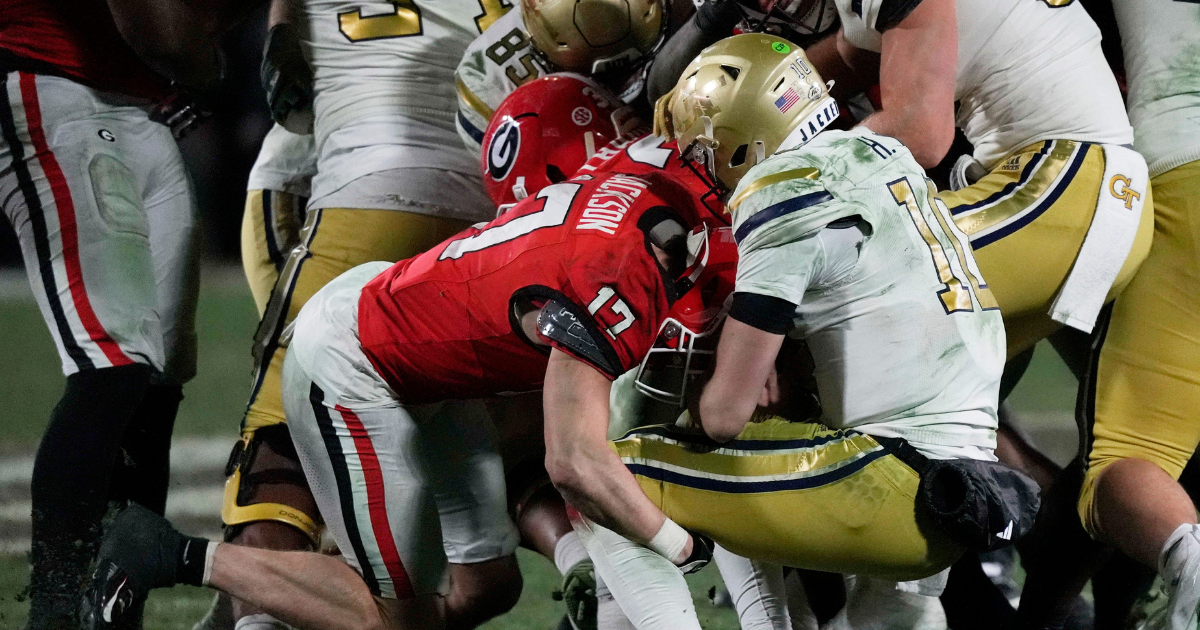
The offseason provides a great opportunity to shake things up in the sports world. In recent years, we learned that power brokers in college football aren’t hesitating to make bold moves in the sport. Even though you and I cannot be on the Rules Committee when the NCAA decides how to change the college basketball replay system, we can at least discuss and debate what must be fixed as soon as possible.
KSR videographer Steven Peake is well-known for his outside-the-box thinking. It makes him the perfect person to reassess the best and worst rules in sports. He has a proposition that inspired others from the KSBoard community to share what rules must be changed.
In 2018, Texas A&M took down LSU 74-72 in seven overtimes. Rather than celebrating the jaw-dropping result, the college football rules committee decided to take matters into its own hands.
If a game remains tied after two overtime periods, the ball is no longer spotted at the 25-yard line. Teams must execute 2-point plays to extend the game. The decision was made under the guise of player safety, even though the new CFP has drastically extended the schedule.
Last year, we saw the grossest consequences of this change. Georgia Tech played admirably for four quarters and nearly knocked off Georgia between the hedges. They went to overtime and reached the 2-point period in OT3. It took six of these 2-point periods before Georgia ultimately won. Four of those were scoreless. It was an ugly result for a game that deserved better.
Peake argues that it’s actually a great rule. He is wrong. It is a stupid rule. If they want to limit overtime periods, move the ball back from the 25-yard line to midfield. It takes kickers out of field goal range, forcing teams to play more real football, instead of the bastardized version that is the 2-point period. When a CFP game is decided by one of these long overtime games with 2-point plays, that will turn the wheels of change to fix this stupid rule.
Scoreless Ties in Soccer
Not all of Peake’s ideas are bad. He sat through a 0-0 tie at a Louisville City match last week. That’s brutal. His proposition is simple: If a regular season match ends in a scoreless tie, it goes straight to penalty kicks.
One would argue that penalty kicks are soccer’s version of the 2-point period in college football. However, soccer teams play about four times as many games. Changing one result isn’t as impactful on a full season. It also rewards fans who sat through 90 minutes of soccer by allowing them to see what they paid to watch, goals.
Subscribe to the KSR YouTube Channel for press conferences, interviews, original shows, fan features, and exclusive content.
Other Potential Rule Changes
Allow me to share a few rules that our community at KSBoard loathes.
Fumbling Through the End Zone is a Touchback
It feels too punitive for the fumbling team. The big problem is that there is no clear alternative. Maybe they get the ball at the spot of the fumble? Either way, it feels like a rule you’d see in Pee Wee football, not the National Football League.
Alternate Possession in Basketball
Why must we rely on a switch to determine who gets a tied-up loose ball? While it might make sense to keep the game flowing at lower levels of basketball, where there are more tie-ups, it’s too consequential in college hoops. They should be like the NBA and let the players determine who wins the jump ball by actually having a jump-ball.
Eliminate Ties
The NFL is the richest sports league of the history of the world and hasn’t figured out a way to determine a winner if they can’t create an advantage during a shortened 10-minute overtime period.
Why can’t you shoot it from behind the backboard?
If it doesn’t hit anything, it should be fair game. After all, the degree of difficulty is crazy. If a player can make a shot from behind the backboard, they should be rewarded.
College Football Targeting
Does anybody actually know what targeting is? I don’t even think the refs know.
Got thoughts? Continue the conversation on KSBoard, the KSR Message Board.
-
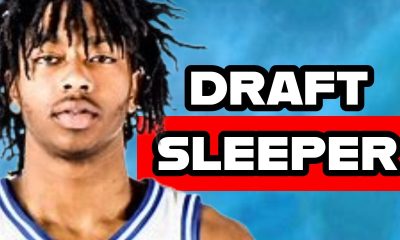
 College Sports2 weeks ago
College Sports2 weeks agoDuke basketball's Isaiah Evans on 2025 NBA Draft early entry list
-

 Fashion2 weeks ago
Fashion2 weeks agoHow to watch Avalanche vs. Stars Game 7 FREE stream today
-

 High School Sports1 week ago
High School Sports1 week agoWeb exclusive
-

 Sports1 week ago
Sports1 week agoPrinceton University
-

 Sports1 week ago
Sports1 week ago2025 NCAA softball bracket: Women’s College World Series scores, schedule
-

 Motorsports1 week ago
Motorsports1 week agoBowman Gray is the site of NASCAR’S “Advance Auto Parts Night at the Races” this Saturday
-

 NIL1 week ago
NIL1 week ago2025 Big Ten Softball Tournament Bracket: Updated matchups, scores, schedule
-
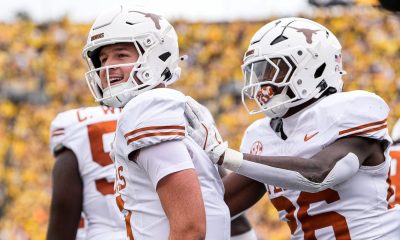
 NIL3 weeks ago
NIL3 weeks agoHow much money will Quinn Ewers make in NFL? Salary, contract details
-

 Motorsports1 week ago
Motorsports1 week agoMOTORSPORTS: Three local track set to open this week | Sports
-
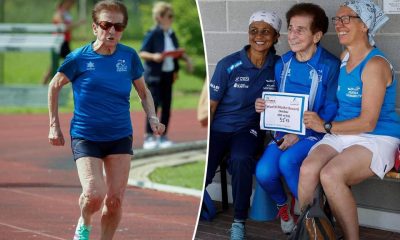
 Sports3 weeks ago
Sports3 weeks agoItalian woman, 91, breaks running record — what makes her body different, according to doctors






 : roknowswrestling/TikTok)
: roknowswrestling/TikTok)



















